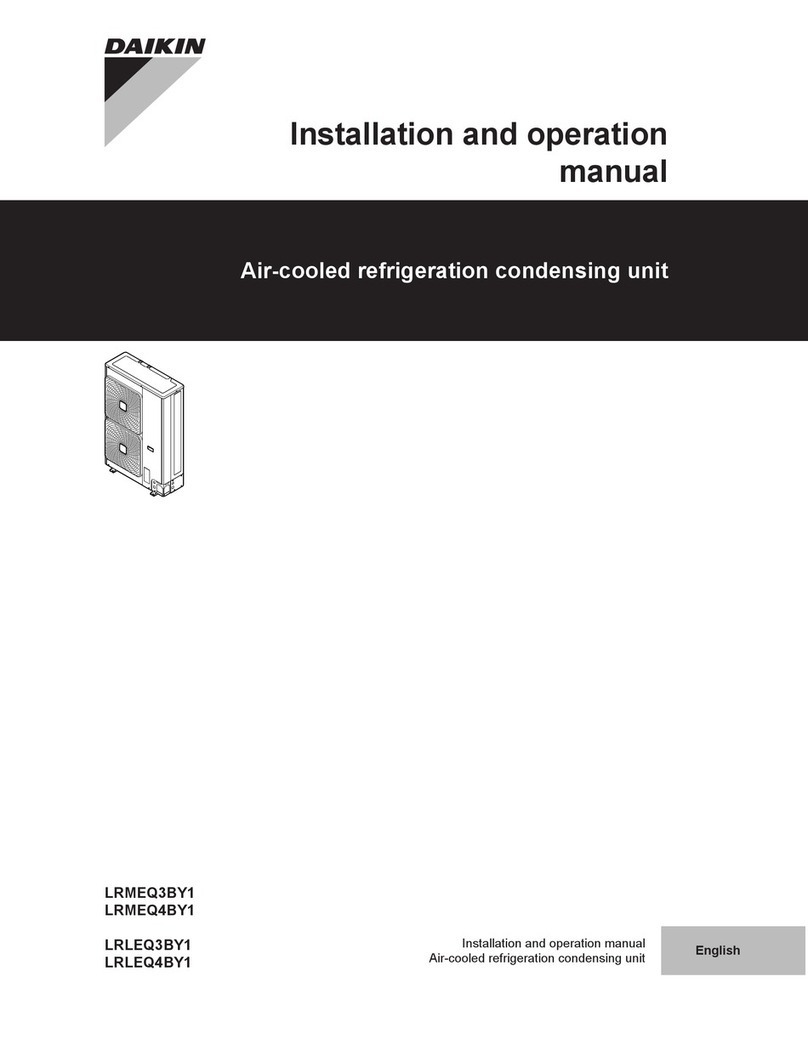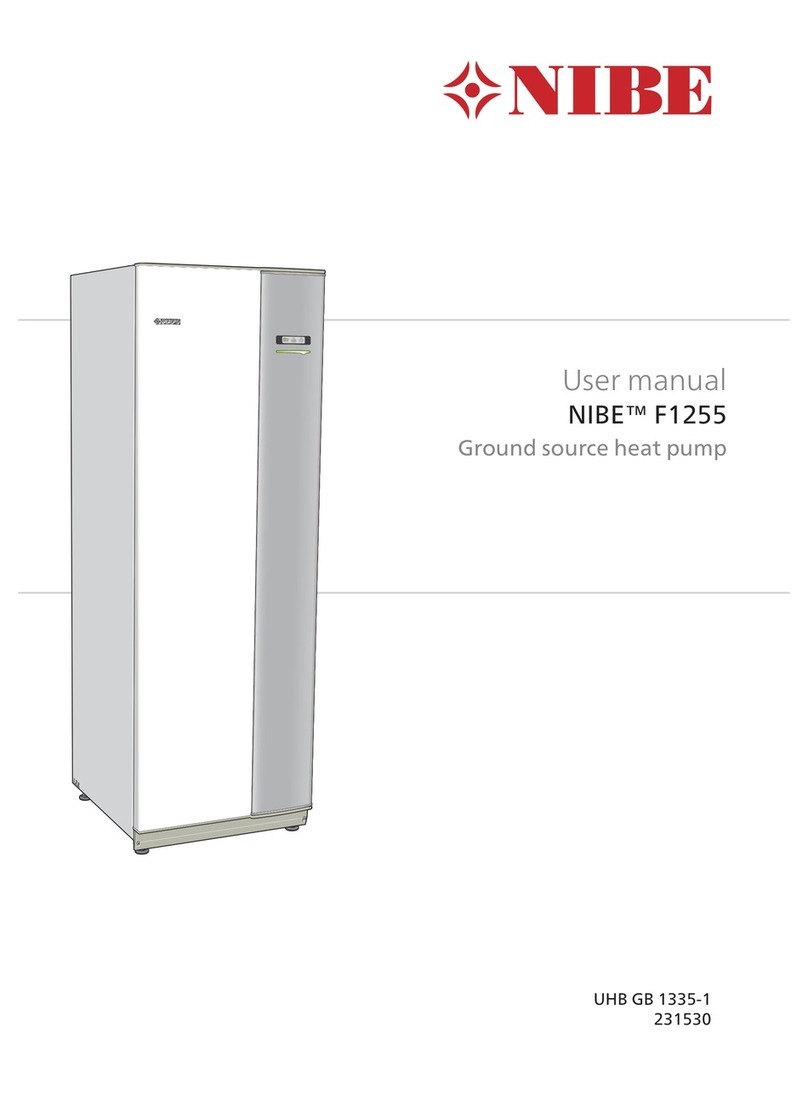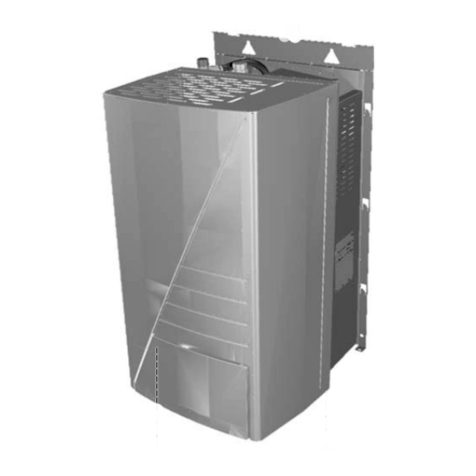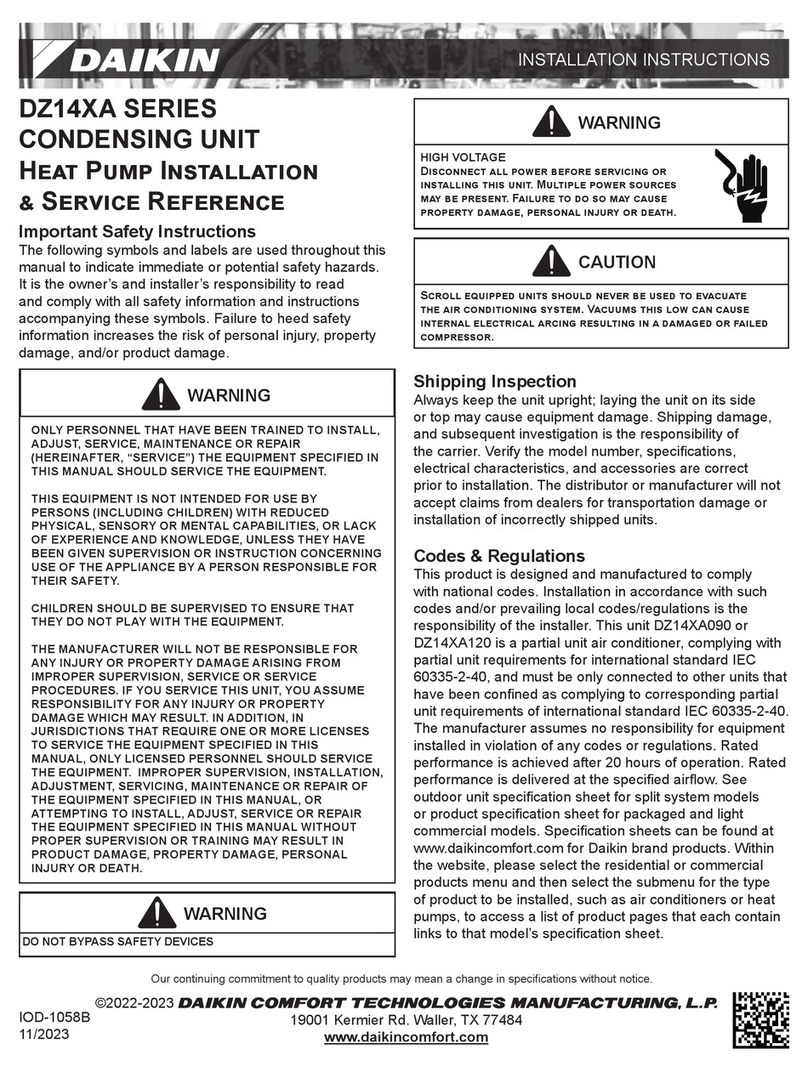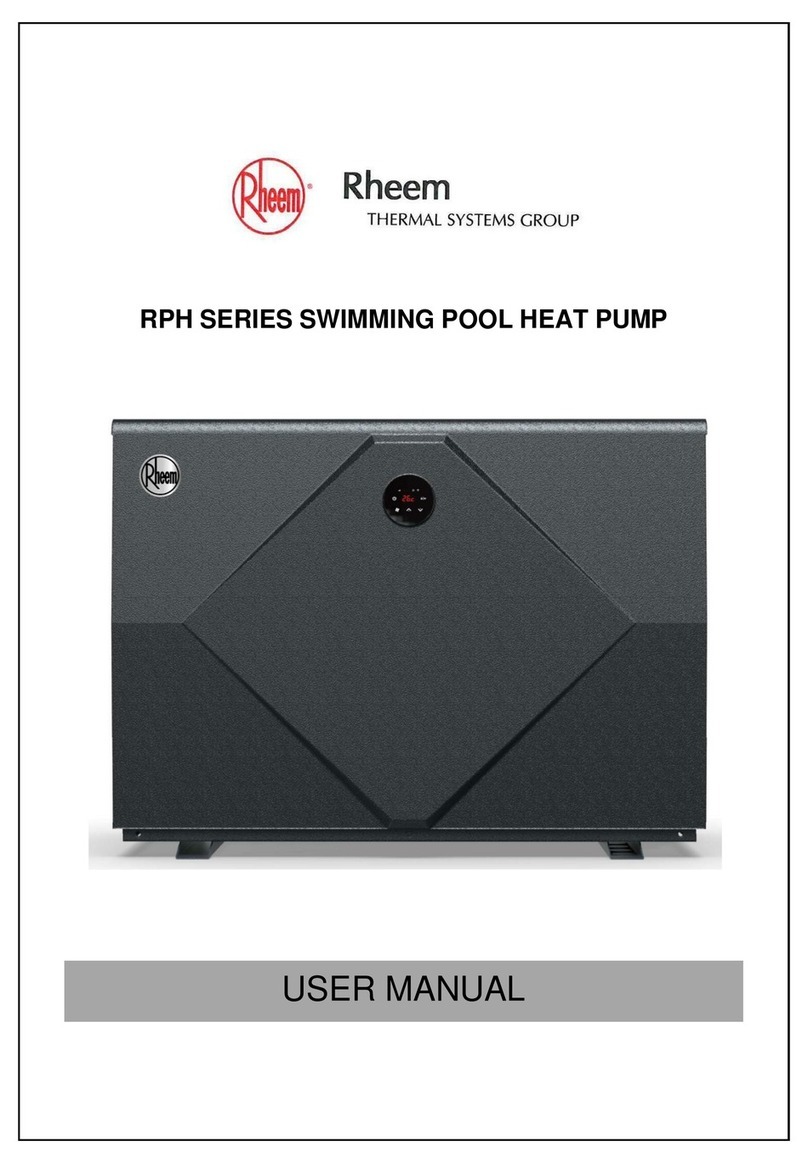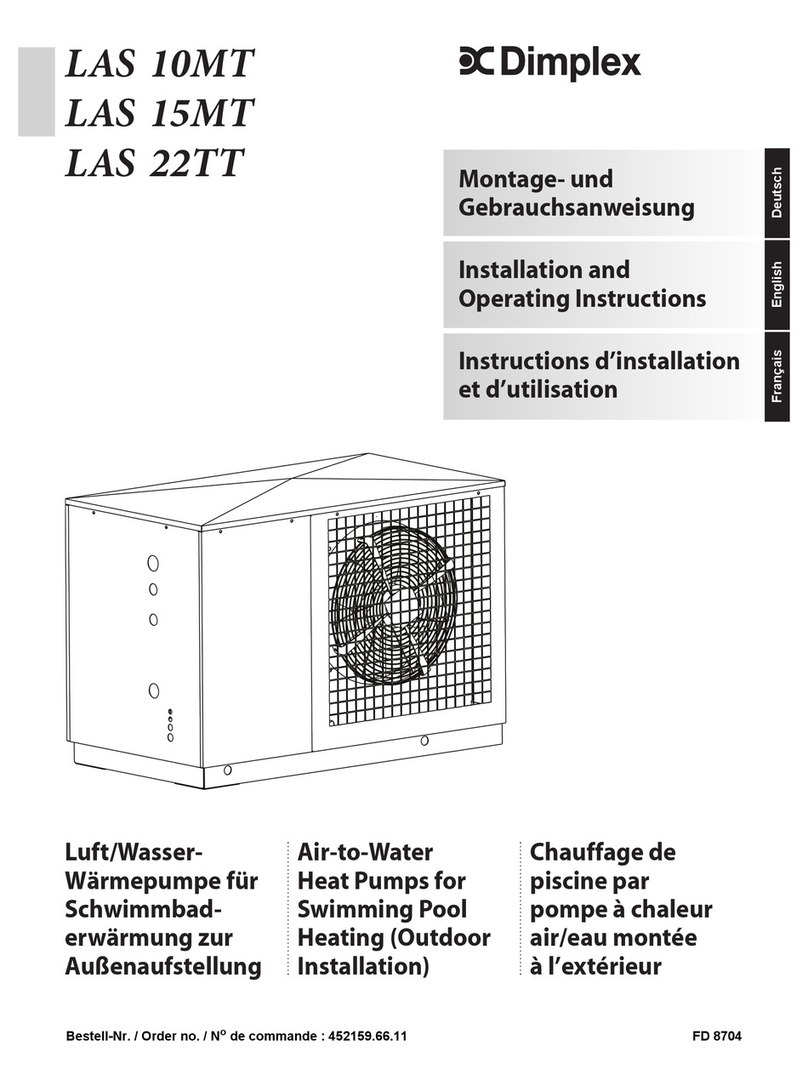TERSUS BCPI7 User manual

- 1 -
Installation &Operation Manual
I
Full Inverter Swimming Pool Heat Pump

- 2 -
BCPI7 BCPI10,BCPI13
BCPI17 BCPI21 BCPI30 BCPI30
Thank you very much for purchasing our product, please keep and read this manual
carefully before you install heat pump.
Thank you very much for purchasing our please keep and read this manual carefully
Packing List
No.
Name
Qty.
Remark
1
Installation & Operation Manual
1
2
Wire-controller
1
3
Wire controller box and sponge pad
(to be installed on the heat pump shell)
1
4
Drain-pipe (2 m)
1
5
Drain-pipe connector
1

- 3 -
Please keep installation manual properly, and read it carefully before using.
The unit must be installed by professional personnel according to the instructions in this
manual.
WARNING: if the unit is installed in locations that are at risk of lightning strikes, lightning
protection measures must be provided.
WARNING: The unit is not suitable for use in winter: all water must be drained from the unit
during overwinter or it could freeze inside the unit causing damage to the internal components.
Content
Accessories……………............................................................................4
Safety.........................................................................................................5
Heat pump working principle..................................................................6
Installation of the unit..............................................................................8
Installation of the pipeline.....................................................................12
Installation of optional accessories......................................................14
6
Rubber shock absorber
4
7
Heat Pump Unit
(The pipe connector has been installed on the
machine)
1

- 4 -
Installation and operation of electric devices......................................15
Operating Instructions... .......................................................................18
Wireless/Remote control................................................. ......................32
Adjusting and Initial operation ..............................................................42
Operation and maintenance...................................................................43
Fault analysis and elimination method.................................................45
Technical parameters.............................................................................46
After-sale service....................................................................................47

- 5 -
Each unit produced by our factory comes with the following accessories:
In order for the system to work the following parts are required
No.
Name
Qty.
use
1
Water pump
1
To circulate the pool water
2
Filter system
1
To clean the pool water which passes through
the heat pumps
3
Water pipes system
1
To connect the equipment and circulate the
water in the pool
NOTE
The types and quantity of the water pipes, valves, filter equipment, sterilizing equipment used for the
swimming pool heating/circulation pipe system, depend on the project design. We do not recommend to
install auxiliary electric heaters in the system.
No.
Name
Qty.
Use
1
Installation & Operation Manual
1 PC
User Guide to install the unit
2
Wire controller
1 PC
Used for the machine operation interface
3
Drain-pipe
1 PC
Used for draining the condensate water
4
Drain-pipe connector
1 PC
To connect the drain pipe to the heat pump
5
Shock absorb Rubber
4 PCS
To reduce vibration and noise
6
Heat pump unit
1 SET
For heating water
1. Accessories

- 6 -
●The installation should be done by the professional persons, to prevent leaking, electric shock or
fire.
● Confirm the ground connection, if the ground connection is not correctly done, it may cause electric
shock.
2. Safety
Range of application:
1.Power supply: 220V-240V/1N~50Hz.
2.Ambient temperature: -15°C〜43°C :
3.Working water temperature: Min. inlet water temperature 8°C,Max. outlet Water
Temperature 40°C. If the system is always used beyond the available water range,
please contact with manufacturer.

- 7 -
THE UNIT MUST BE EARTHED PROPERLY BEFORE USAGE OR THE
When installing the heat pump in a small room, make sure it is well ventilated.
● Don't put fingers or objects into the air inlet outlet as the rotating fan could cause serious injuries.
● If you smell anything burning, turn off the manual power switch immediately, stop operation and
contact the after-sale service department. Continued abnormal operation may cause electric shock
fire.
● When the unit needs to be removed or re-installed, please ensure that the work is carried out by
qualified professionals. If the installation is not correct, it may cause unit operation failure, electric
shock, fire, hurt, leaking, etc.
● Please ensure that any repairs carried out by qualified professionals: failure to make proper repairs
could cause unit operation failure, electric shock, fire, hurt, leaking, etc..
● Do no install the unit near flammable sources, as any leakages could cause a fire.
● Make sure the base on which the unit is installed is strong enough to support it.
● Make sure a leakage protection switch is installed to prevent electric shock or fire.

- 8 -
●When cleaning the unit, stop operation, switch off the power and disconnect the power..
3.1 Heat pump operation
Heat pumps use heat from the sun by collecting and absorbing energy from the outside air.
This energy is then compressed and transferred to the pool water. Your existing water pump
circulates the water through the heat pump, which is normally installed next to the pool
filtration system, and the water warms up. The heat pump timer can be set so that the pump
operates at the times you want: for example, during daylight hours from 9am to 5pm.
➢ The unit contains a fan that draws in outside air and directs it over the surface of the
EVAPORATOR (energy collector). The liquid refrigerant inside the EVAPORATOR coil
absorbs the heat from the outside air and becomes a gas.
➢ The warm gas inside the coil passes through the COMPRESSOR, which concentrates
and increases the heat to form a very hot gas, which then passes through the
CONDENSER (water heat exchanger). It is here that the heat exchange occurs as the
heat from the hot gas is transferred to the cool swimming pool water circulating through
the heat exchanger.
➢ The pool water becomes warmer and the hot gas returns to its liquid form as it flows
through the CONDENSER coil. The gas then passes through the Electronic Expansion Valve
3. Heat pump unit working principle

- 9 -
and the whole process begins again.
➢ Developments in heat pump technology mean that today heat pumps can efficiently
collect heat from the outside air even when the temperature is as low as 7-10°C. This
means that for tropical and subtropical climates the pool can be maintained between 26°C and 32°C.
3.2 Air source heat pump working principle
4 way valve
Water inlet
Water Outlet
Condenser
Gas-liquid
separator
Compressor
Filter
Expansion valve
Filter
Evaporator
Fan unit
Figure 1
Qc (Heat energy) = Qa (Compressor consumption) +Qb (Heat energy absorbed from ambient
environment)
4.1 Installation Guidelines
4. Installation of the unit

- 10 -
● Avoid installations in locations containing mineral oil.
● Avoid installation in locations where the air contains salt or other corrosive gases.
● Avoid installation in locations with serious power supply voltage fluctuation.
● Avoid installation in unstable places, such as a car or cabin.
● Avoid installation near flammable items.
● Avoid installation in locations with strong electromagnetic forces.
● Avoid installation in locations with harsh environmental conditions.
4.2 Installation check
● Check the model, number, name etc, to avoid incorrect installation.
● Make sure there is enough space for installation and maintenance.
● Install in a dry well-ventilated place and make sure there are no obstructions around the air inlet
and outlet.
● Make sure the supporting base is strong enough and prepared to that shocks can be avoided.
● The power supply and diameter of the cables used must be in accordance with the electrical
installation requirements.
● Electrical installation must comply with the relevant technical standards of electrical equipment,
and electrical insulation work must be done.
● The unit must be put horizontally for at least eight hours before running.
4.3 Installation space

- 11 -
Please observe the space requirements indicated below for optimal operation and maintenance.
Figure 2. Horizontal installation space requirements(mm)
4.4 Heat pump dimensions
Figure 3 Heat pump dimensions BCPI7 BCPI10
BCPI13,BCPI17 BCPI21
A
B
C
D
E
F
G
H
I
J
K

- 12 -
BYC-007/010T
F1
591
836
379
335
98
640
98
107
290
26
11
BYC-013/017/0
21TF1
641
896
389
363
128
640
128
107
340
26
11
4.5Exploded view
Parts
Parts
1
Fan protective gill
15
Water flow switch
2
Front panel
16
Titanium heat exchanger
3
Fan blade
17
Right structure
4
Fan motor
18
Manometer

- 13 -
4.6 Installation base for heat pump
Please refer to Figure 4.
A nchor bolt
Drainage tray Heat Pump
Installation base
Concrete
Anchor bolt
Screw nut/washer
Shock absorb
Heat Pump
Drainage tray
Figure 4 Installation base
4.7 Lifting
●Please use four or more soft lifting belts to move the sets (see Figure 5).
●Please use protective plates on the surface of the units when handling to avoid scratches and
5
Left panel
19
Right panel
6
Left structure
20
Control panel
7
Evaporator
21
Electrical terminal cover
8
Fan motor mount
22
Electrical terminal block
9
Upper structure
23
Electrical cable support
10
Electric box cover
24
Electronic expansion valve
11
Elevtrical box
25
Reactive resistance
12
Top cover
26
Bottom panel
13
Plastic net
27
Four-way valve
14
Middle panel
28
Compressor

- 14 -
deformation.
●Double-check that the support base is strong enough before fixing the unit.
● The heat pump will produce condensation water: remember to provide a drainage channel when
making the installation base.
●Please install shock absorbers on the surface of the base.
Figure 5 Lifting diagram
5.1 Attention
● Prevent air, dust and other material from going into the water pipes.
● Fix the whole system before installing the water pipes.
● Water inlet and outlet pipes should be protected by an insulation layer.
5. Installation of pipes

- 15 -
● Make sure that there is a stable water flow, to prevent excessive throttling.
● Do not handle, move or lift the unit by holding the water inlet and outlet pipe: use only the holes on
the beam of the base (see Figure 5)
● When connecting the water inlet and outlet pipes, use two pipe wrenches to adjust the two parts of
the pipes, and make sure the water inlet and outlet pipes do not twist (see Figure 6).
Figure 6
5.2 Instructions
5.2.1 Symbols
5.2.2 Pipeline installation diagram

- 16 -
Controller
Heat
Pump
Water temp sensor wire.
Swimming Pool
Pump signal wire
Pump
Drainage
Drainage
Feeding water
Figure 7 Diagram(Single unit for reference)
●It is recommended to install a one-way valve for each unit to prevent water back flow.
●Multiple units can be installed as part of a system, but each unit should be controlled independently.
●All pipes and valves should be insulated.
5.2.3 Connection sizes
Model No.
Inlet
Outlet
BCPI7 BCPI10 BCPI13
BCPI17 BCPI21 BCPI30
BCPI30
DN50
DN50
●The pipe pressure and flow rate should be calculated before selecting the diameter of the pipe,
pressure drop range is 0.3〜0.5 kgf/cm2(3〜5m)head pipe flow rate range is 1 .2〜2. 5 m/s.
●The hydraulic calculation should be made after selecting the pipe diameter. If the resistance is more
than the pump head, then a more powerful pump or larger pipes are required.
5.2.4 Required Water Quality
● Bad quality water will produce more lime scale and sand: this kind of water should be filtered and
demineralize.

- 17 -
●The water quality should be analyzed before operating the unit: PH value, conductivity, Chloride ion
concentration and sulphate ion concentration should be checked.
●Acceptable water quality shown below:
PH value
Total hardness
Conductivity
Sulphate ion
Chlorine ion
Ammonia ion
7~8.5
< 50ppm
<200μV/cm(25℃)
None
< 50ppm
None
Sulfate ion
Silicon
Iron content
Sodium
Ca
< 50ppm
< 50ppm
< 0.3ppm
No requirement
< 50ppm
● Suggested filter mesh = 40.
6.1 Selection of the water pump
●The circulation pump is required for the system to operate, there is a terminal connection for the
pump (single phase)
NOTE
For single-phase pumps, please check the wiring diagram.
●Head of circulation pump = height difference between water level and main unit + total pipeline
resistance (determined by the hydraulic calculation) + pressure loss of main unit (see nameplate on
heat pump).
NOTE
Multiple units are installed in parallel place more demand on the water pump requirement.
6.2 Water pipe selection
●The selection of the water pipe should be based on the actual system specifications
●The flow switch can be installed horizontally or vertically. If installed the direction of the water flow
6. Installation of optional accessories

- 18 -
must be upwards and NOT downwards.
● The flow switch must be installed on a straight pipeline, and there must be more than five times the
length of the pipe diameter on either side of the flow switch (see Figure 8 below). The direction of
fluid must follow the arrow on the controller. The terminal block should be installed in a position that
is easy to operate.
A
5A 5A
Figure 8
7.1 Electrical wiring
●The unit should have a dedicated power supply in accordance with the recommended voltage.
●Unit power supply circuit must have an effective external grounding.
●Wiring and electrical connections must be made by qualified professionals in accordance with the
wiring diagram.
●Power line and signal line layout should be neat and cables should not interfere with each other.
●Do not install the units if the power supply specifications are not met.
●After all wiring connections have been completed, check them again carefully before switching on
the power.
7.2 Electrical Wiring Specification
Model
Electrical Wiring Specification
7. Installation of electrical devices

- 19 -
BCPI7 BCPI10
3*1.5 mm²
BCPI13 BCPI17
3*2.5 mm²
BCPI21 BCPI30
3*4 mm²
BCPI30(380V/3ph)
5*2.5 mm²
Terminal
Terminal cable max. 4 mm²
Figure 9
7.3 Circulation pump installation
The heat pump only provides a signal for the circulation pump, A separate A.C. Contactor is
required to connect the circulation pump.

- 20 -
Figure 10
Figure 11
NOTE:
If the pump power less than 250w, please
connect the pump as this drawing
NOTE:
If the pump power > 250w, please
connect the pump as this drawing
This manual suits for next models
5
Table of contents
Popular Heat Pump manuals by other brands

Viessmann
Viessmann VITOCAL 222-G Installation and service instructions
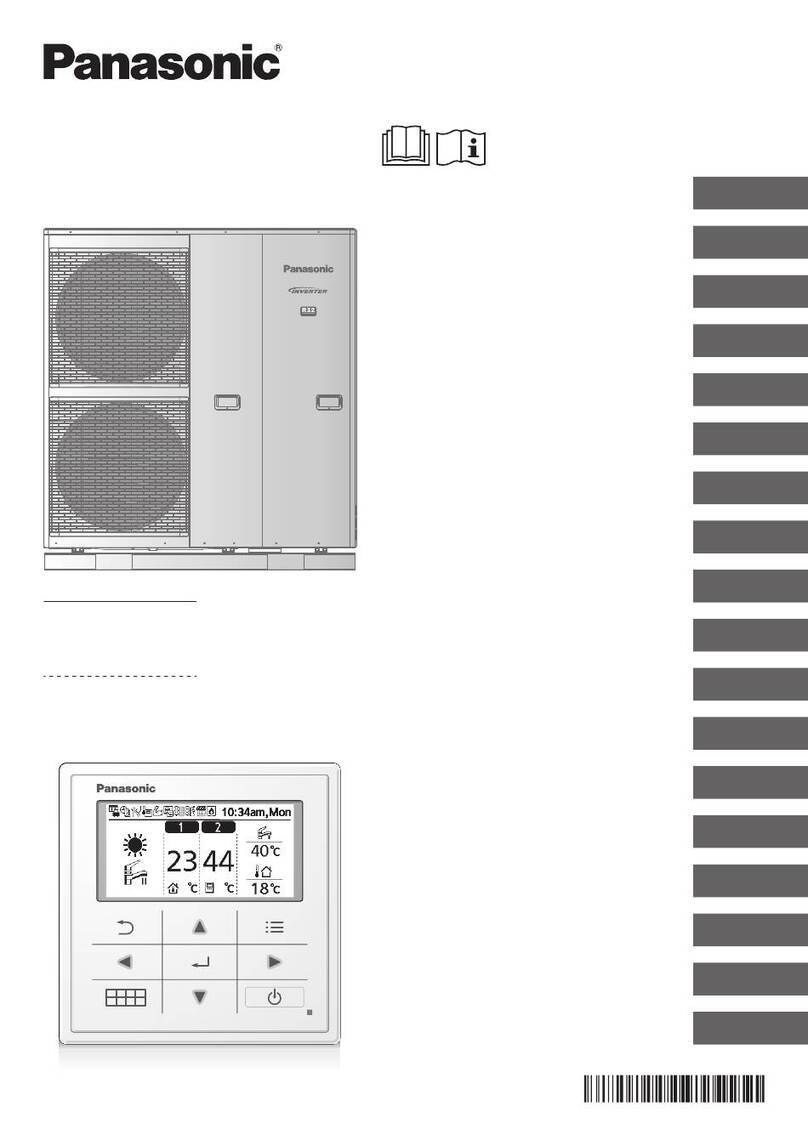
Panasonic
Panasonic WH-MXC09J3E5-1 quick guide

Daikin
Daikin Altherma 3 R F User reference guide
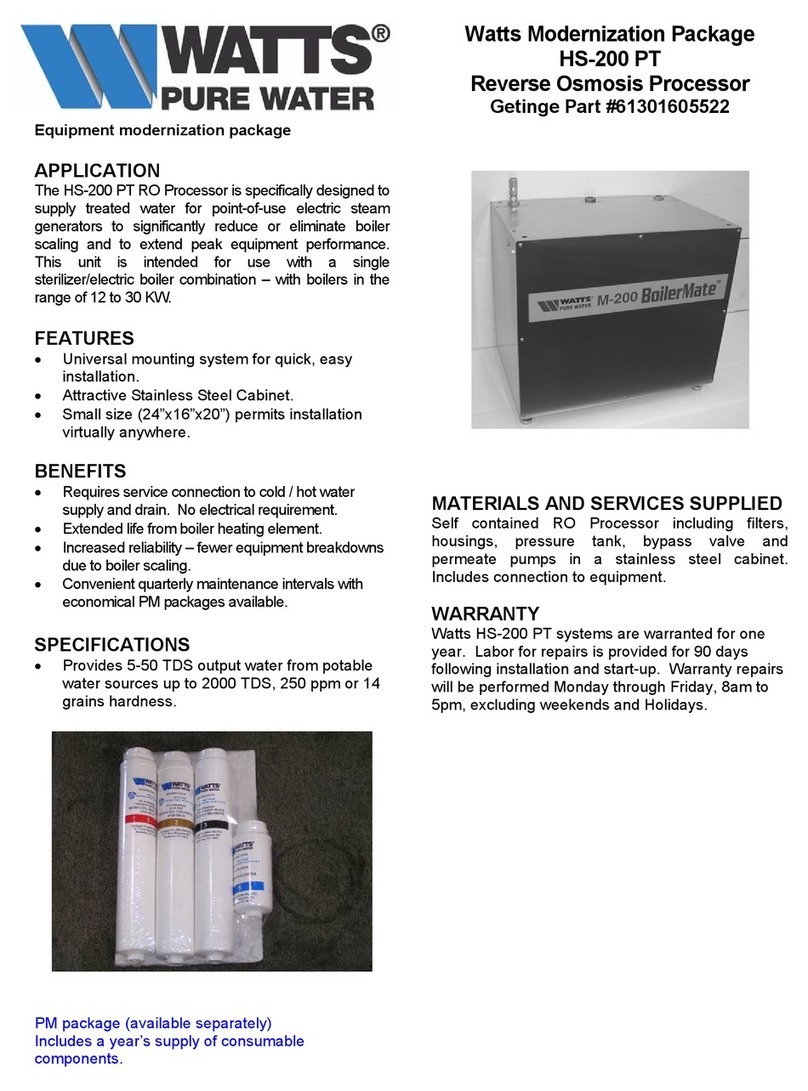
Watts
Watts HS-200 PT installation instructions
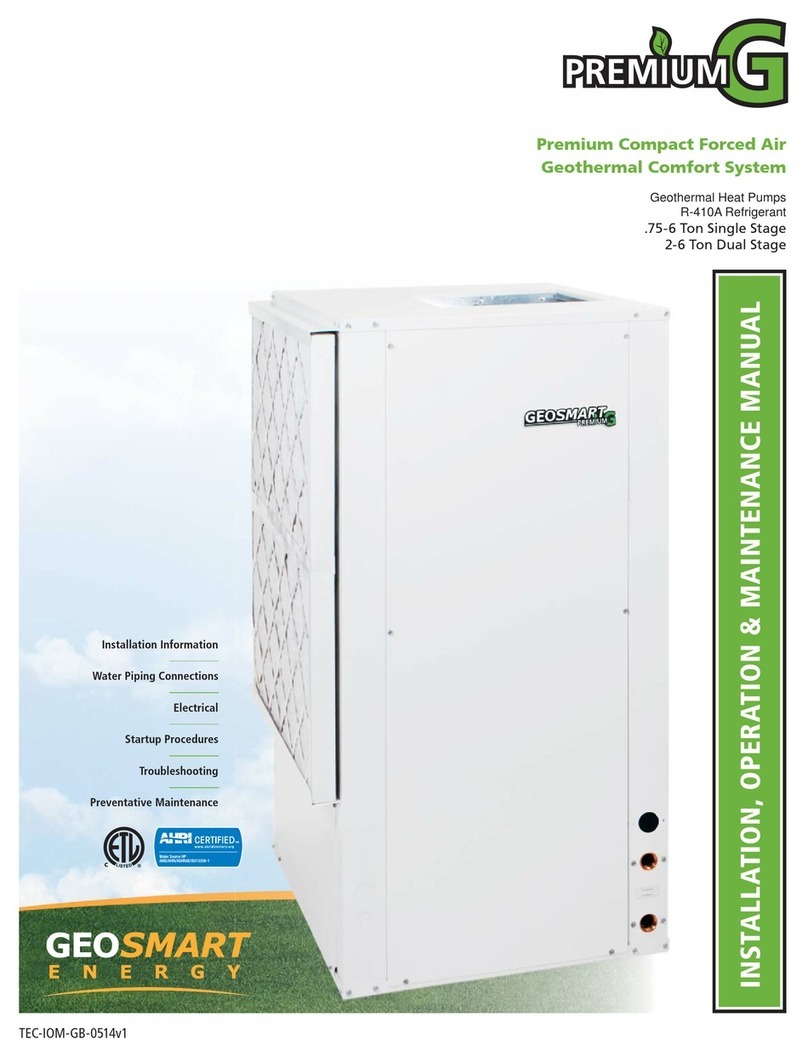
GeoSmart
GeoSmart Premium G Installation information

Haier
Haier 2U18MS2VHB installation manual

